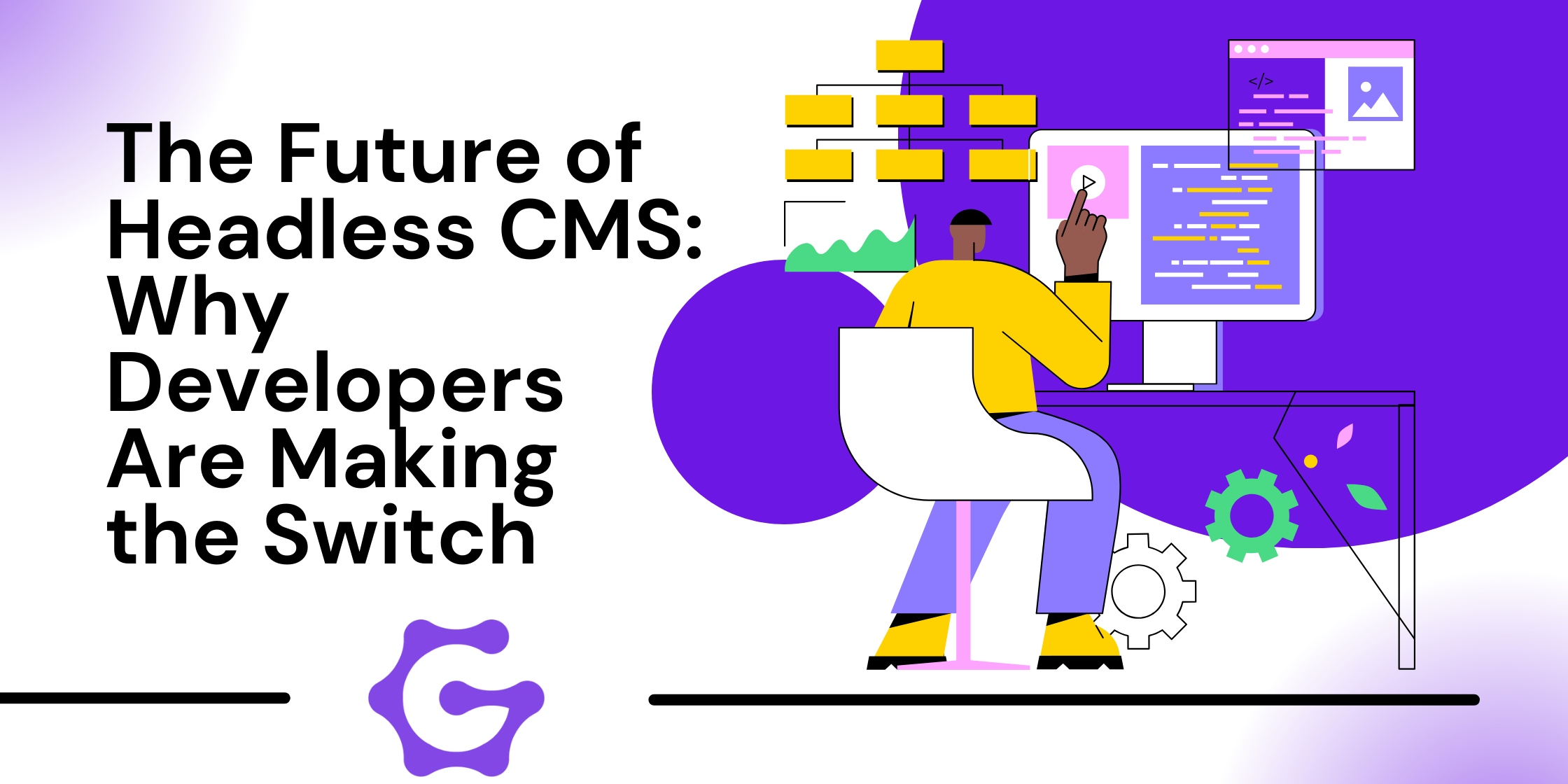Why Developers Are Moving to Headless CMS: The Future of Content Management

Content management has evolved. Traditional CMS platforms like WordPress and Drupal have dominated for years, but as web development demands shift, headless CMS is taking over. Developers are embracing headless architecture for greater flexibility, faster performance, and seamless omnichannel content delivery, all things traditional CMSs struggle to handle.
What is Headless CMS?
A headless CMS separates content management (the "backend") from content presentation (the "frontend"). Instead of being locked into a built-in website structure, headless CMS delivers content via API, allowing developers to use any frontend framework (React, Vue, Next.js, etc.) to display it.
How It Differs from Traditional CMS:
- Traditional CMS (WordPress, Joomla) – Tightly coupled frontend and backend; content is stored and displayed within a predefined structure.
- Headless CMS (Contentful, Strapi, Sanity) – Backend manages content, while the frontend fetches and displays it via API, offering complete design flexibility.
This decoupled approach is revolutionizing web development, especially for businesses that require omnichannel content distribution.
Why Developers Are Switching to Headless CMS
1. Greater Flexibility & Customization
With a traditional CMS, developers are limited to predefined templates and themes. Headless CMS removes these restrictions, allowing teams to:
- Build unique, custom frontends using frameworks like React, Vue, and Next.js.
- Deliver content across multiple platforms (web, mobile apps, IoT devices) from a single source.
- Scale effortlessly without being tied to a rigid structure.
For developers working on complex projects, this level of customization is a game-changer.
2. Faster Performance & Better SEO
Speed is everything in today’s web landscape, and headless CMS helps developers build ultra-fast websites by:
- Enabling static site generation (SSG) with tools like Next.js and Gatsby.
- Reducing backend processing, as pages are served via API instead of rendering dynamically.
- Allowing server-side rendering (SSR) for better SEO and faster load times.
Since Google prioritizes page speed for rankings, a headless CMS can help boost search performance compared to bulky, monolithic CMS platforms.
3. Omnichannel Content Delivery
Businesses today need to publish content beyond websites—think mobile apps, smart devices, digital kiosks, and more. A headless CMS:
- Centralizes content management so teams can push updates everywhere from one system.
- Makes it easy to repurpose content across platforms without duplication.
- Future-proofs content delivery, ensuring scalability as new platforms emerge.
For brands prioritizing consistent cross-platform experiences, headless CMS is the ideal solution.
4. Developer-Friendly Tech Stack
Traditional CMS platforms often come with bloated code and outdated PHP-based architecture. Headless CMS gives developers full control over the tech stack, allowing them to:
- Use modern JavaScript frameworks instead of being stuck with old CMS themes.
- Implement GraphQL for more efficient data fetching (vs. REST APIs).
- Deploy content dynamically using serverless or JAMstack architectures.
By giving developers the freedom to work with cutting-edge tools, headless CMS makes development more efficient and future-proof.
Top Headless CMS Platforms in 2025
If you’re considering making the switch, here are some of the best headless CMS options available:
1. Contentful
- Enterprise-grade, API-first CMS.
- Supports GraphQL and integrates with modern frontend frameworks.
- Ideal for large-scale businesses and multi-platform content delivery.
2. Strapi
- Open-source and highly customizable.
- Self-hosted or cloud-based, giving developers full control over data.
- Best for teams that want flexibility with backend customization.
3. Sanity
- Real-time collaboration and structured content editing.
- Strong developer community and integration with popular frameworks.
- Perfect for businesses that need dynamic, scalable content workflows.
4. Storyblok
- Visual editor combined with headless architecture.
- Great for teams that need a balance of developer control and marketer usability.
Each platform offers unique strengths, but all of them prioritize API-driven content management, scalability, and developer freedom.
Is Headless CMS Right for You?
Headless CMS is a powerful solution, but it’s not for everyone. Consider making the switch if:
- You want complete control over frontend design and user experience.
- Your business needs multi-platform content delivery (web, mobile, IoT, etc.).
- Speed, scalability, and modern development frameworks are a priority.
You’re comfortable with API-based content management rather than traditional CMS structures.